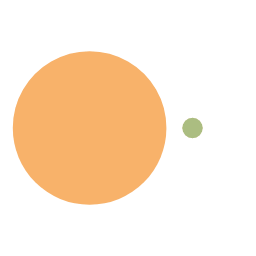箭头函数
定义
箭头函数是 ES6 之后增加的一种编写函数的方法,并且它比函数表达式要更加简洁
- 箭头函数不会绑定 this、arguments 属性;
- 箭头函数不能作为构造函数来使用(不能和 new 一起来使用,会抛出错误);–> (因为箭头函数没有原型);
和普通函数对比
普通函数
1
2
3
4
5
6
7
8
|
function foo1() { };
const foo2 = function (name, age) {
console.log("函数体代码");
console.log(name, age);
};
|
箭头函数
1
2
3
4
5
|
const foo3 = (name, age) => {
console.log("箭头函数函数体代码");
console.log(name, age);
}
|
箭头函数简写
- 如果箭头函数只有一个参数,那么 () 可以省略
1
2
3
4
5
6
7
8
9
10
| const names =["fsllala","fsl","forward"];
const nums =[20,30,45,66,73];
names.forEach(item=>{
console.log(item);
})
const newNums = nums.filter(item=>{
return item%2==0;
})
|
- 如果箭头函数只有一行执行代码,那么 {} 可以省略
1
2
3
4
5
6
7
| const names = ["fsllala", "fsl", "forward"];
const nums = [20, 30, 45, 66, 73];
names.forEach(item => console.log(item))
const newNums = nums.filter(item => item % 2 == 0)
|
- 只有一行执行代码,这行代码的表达式结果会作为函数的返回值默认返回
1
2
3
4
5
6
7
8
9
10
11
| const nums = [20, 30, 45, 66, 73];
const newNums = nums.filter(item => item % 2 == 0);
console.log("newNums",newNums);
const arrFn1 =()=>{
return 123;
}
const arrFn = ()=>123;
console.log(arrFn());
|
- 如果默认返回值是一个对象,那么这个对象必须加 ()
- 我们先看如下现象,不难发现,当函数的返回值是对象形式的时候,不能区分
{} 到底是执行体,还是返回的对象;
1
2
3
4
5
| const arrFn1 = () => 123;
const arrFn2 = () => "fsllala";
const arrFn3 = () => [2, 3, 4, 5, 1];
const arrFn4 = () => { name: "fsllala" };
const arrFn5 = ()=>{}
|
- 为了区分,这个对象必须加 ();代表箭头函数的默认返回值是个对象;
1
| const arrFn4 = () => ({ name: "fsllala" });
|
箭头函数 this 指向
箭头函数不使用 this 的四种标准规则(也就是不绑定 this);箭头函数内部没有绑定自己的 this,而是根据外层作用域来决定 this;
所以箭头函数中的 this 和普通变量的查找机制一样,当前作用域没有,会向上层作用域查找;
普通函数没有这个 this 查找机制,而是遵循 this 的四种标准规则;详见:this
- 全局环境 this
1
2
|
console.log("window", this);
|
- 隐式绑定
绑定改的是函数内部的 this 指向,但是箭头函数内部没有 this,会向上层作用域查找 this,但并没有改变上层作用域中的 this 指向
1
2
3
4
5
6
7
8
9
| const foo = () => {
console.log(this);
}
const obj = {
name: "fsllala",
say: foo
}
obj.say();
|
- 显示绑定
绑定改的是函数内部的 this 指向,但是箭头函数内部没有 this,会向上层作用域查找 this,但并没有改变上层作用域中的 this 指向
1
2
3
4
5
| const foo = () => {
console.log(this);
}
foo();
foo.call("aaa");
|
- 箭头函数 例一:
1
2
3
4
5
6
7
8
9
10
11
12
13
14
15
16
17
18
19
20
21
22
23
24
25
26
27
28
29
| const obj = {
name: "fsllala",
say: function () {
const bar = () => {
console.log("bar", this);
}
return bar
}
}
const fn = obj.say();
fn();
|
- 箭头函数 例二:
obj 是个对象,是没有自己的作用域的;可能有人会说 obj 是用 const 声明的,但其实块级作用域形式为 {const xxx=xxxx;}
1
2
3
4
5
6
7
8
9
10
11
12
13
14
15
16
17
18
19
20
21
22
23
24
25
26
27
28
29
| const obj = {
name: "fsllala",
say: () => {
const bar = () => {
console.log("bar", this);
}
return bar
}
}
const fn = obj.say();
fn();
|
- 箭头函数 例三:
模拟回调函数的实现
1
2
3
4
5
6
7
8
9
10
11
12
13
14
15
16
17
|
function request(url, callbackFn) {
const arrs = ["fsl", "fsllala", 'forward'];
callbackFn(arrs);
}
const obj = {
names: [],
network: function () {
request("/namesArr", function (params) {
console.log(params);
})
}
}
obj.network();
|
需求:将回调函数返回的数据添加到 obj.names 中;
- methods1:const that = this;
1
2
3
4
5
6
7
8
9
10
11
12
13
14
15
16
17
18
19
20
21
22
23
24
25
26
27
28
|
function request(url, callbackFn) {
const arrs = ["fsl", "fsllala", 'forward'];
callbackFn(arrs);
}
const obj = {
names: [],
network: function () {
const that = this;
request("/namesArr", function (params) {
console.log(this);
that.names = [...params];
})
}
}
obj.network();
console.log(obj);
|
实际操作的位置 (业务) 中讲普通函数改为了箭头函数;
1
2
3
4
5
6
7
8
9
10
11
|
const obj = {
names: [],
network: function () {
request("/namesArr", (params) => {
console.log(this);
this.names = [...params];
})
}
}
|
整体代码:
1
2
3
4
5
6
7
8
9
10
11
12
13
14
15
16
17
18
19
20
21
22
23
|
function request(url, callbackFn) {
const arrs = ["fsl", "fsllala", 'forward'];
callbackFn(arrs);
}
const obj = {
names: [],
network: function () {
request("/namesArr", (params) => {
console.log(this);
this.names = [...params];
})
}
}
obj.network();
console.log(obj);
|























